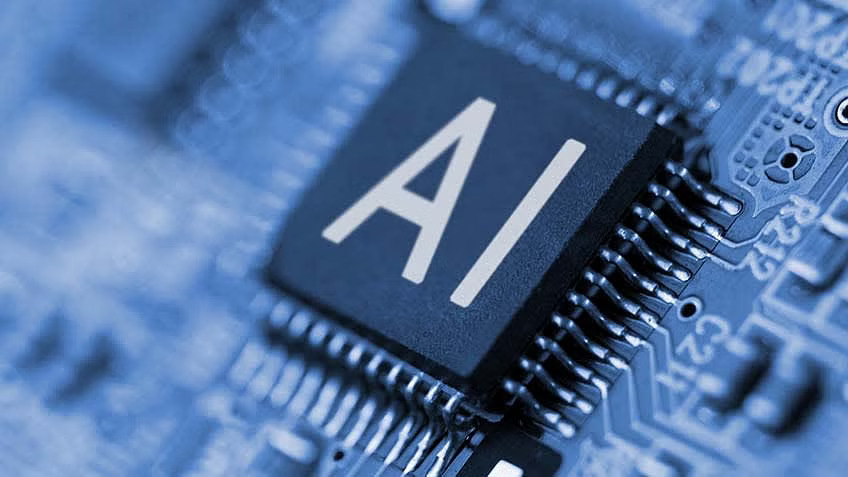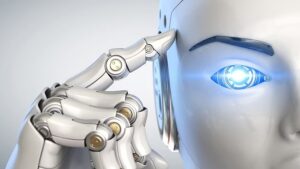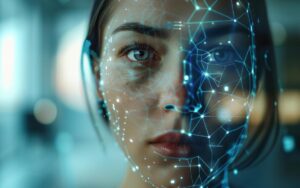Artificial intelligence is an exciting new (and often controversial) innovation making headlines today. Consequently, many new terms are associated with AI, which can sometimes lead to confusion. However, that’s to be expected; new technologies often come with a learning curve and the need to learn a whole new syntax. And that’s why we’re here today: to demystify the concept of sustainable AI.
This article discusses sustainable artificial intelligence (AI), its importance and some use cases. We also share online AI and machine learning training professionals can take to get practical experience..
So, let’s start our discussion of AI and sustainability with a definition.
What is Sustainable AI?
Sustainable AI uses artificial intelligence (AI) systems that function in a manner that conforms to sustainable business practices. Many of today’s commercial and enterprise AI systems have a reputation for not being good for the environment. Fortunately, there are ways to lessen this negative impact.
Data science experts and other IP professionals tasked with developing and implementing AI models know that the process involved in artificial intelligence model training uses vast amounts of energy, which results in unsustainable emissions or, to put it in lay terms, air pollution. Some past studies have shown that the emissions from training a single machine learning (ML) model can equal the combined carbon emissions of multiple cars.
Artificial intelligence models should be made more energy efficient so the computing power involved in the training process won’t draw large amounts of energy. Additionally, all the AI system’s components should be optimized as much as possible to reduce power consumption further. By practicing AI and sustainability, organizations can foster new AI modeling and optimization practices that mitigate the negative environmental impacts of their respective artificial intelligence systems.
Sustainable AI is also referred to as Eco-friendly AI or Green AI.
Also Read: Machine Learning in Healthcare: Applications, Use Cases, and Careers
What Do We Mean By “Sustainable” in “Sustainable AI”?
“Sustainability” is the ability to support or maintain a process continuously over a period. It covers the use of natural resources when this usage remains at a steady level and is less likely to cause environmental damage. That is the general term. When discussing sustainable artificial intelligence, the “sustainable” part means emphasizing sustainable power supplies, data sources, and infrastructures to measure and reduce the carbon footprint during training, modifying, and fine-tuning algorithms.
What’s the Difference Between Sustainable AI and AI for Sustainability?
Sustainable AI primarily focuses on energy efficiency, data sustainability, and transparency in the responsible development and operation of artificial intelligence technologies. Its goal is to minimize the impact of AI systems on the environment.
On the other hand, AI for sustainability focuses on employing artificial intelligence as a tool to address social and environmental challenges directly. AI for sustainability looks to leverage AI technologies to solve sustainability issues, such as climate change, resource management, and conservation.
To sum it up, sustainable AI tries to make AI technologies more environmentally and socially friendly. At the same time, AI for sustainability seeks to leverage artificial intelligence to directly meet or advance environmental and social objectives.
Notice that, despite their distinctions, sustainable artificial intelligence and AI for Sustainability are not mutually exclusive and, in fact, complement each other. Sustainable AI offers the foundational guidelines, principles, and practices needed to decrease the environmental footprint of AI systems. These sustainable AI technologies can subsequently be harnessed in AI for sustainability efforts, allowing more efficient and data-driven solutions to challenges. Thus, these two principles work symbiotically.
The Importance of AI and Sustainability
Here are the three primary areas where AI demonstrates its importance.
- Environmental: Minimizing carbon footprints and the search for energy-efficient AI models. Sustainable AI focuses on reducing the negative environmental impacts associated with artificial intelligence technologies. This emphasis includes reducing AI system energy consumption, using sustainable materials when manufacturing hardware components, and minimizing electronic waste. Therefore, sustainable AI makes AI technologies more eco-friendly and energy-efficient. For example, a medium-sized generative AI model employing a technique known as ‘neural architecture search’ has an energy consumption equivalent to 626,000 tons of CO2 emissions, the same CO2 emissions created by driving five average American cars over their lifetime. Thus, these models need to be more energy efficient.
- Social: Dealing with ethical AI practices in social contexts and the challenge of AI-generated images. Sustainable AI ensures that artificial intelligence technologies are developed and deployed to protect user privacy, respect human rights, promote fairness and inclusivity, and contribute positively to society. This process emphasizes ethical AI practices, avoids discriminatory outcomes, and harnesses artificial intelligence for the greater social good. For example, AI can be used to generate specific types of images. Since the advent of OpenAI (OPENAI), there has been an alarming significant increase in the creation of realistic images of people, especially minors, underscoring the need for increased regulation and awareness, especially around the social aspects of AI.
- Governance. Ensuring responsible artificial intelligence governance, transparency, and accountability. Sustainable AI establishes robust governance structures and accountability mechanisms for artificial intelligence systems. This process includes inserting transparency into AI decision-making processes, adhering to data privacy regulations, and establishing and following clear AI development and deployment policies. Sustainable AI also ensures that every organization governs its artificial intelligence activities responsibly and ethically. For example, artificial intelligence systems can quickly and extensively create fake news, resulting in severe consequences such as undermining trust, spreading disinformation, damaging reputations, influencing decision-making, and even causing societal unrest. Addressing this issue requires urgent measures such as media literacy, improved fact-checking, and regulating the use of artificial intelligence in information dissemination.
Also Read: What is Machine Learning? A Comprehensive Guide for Beginners
Sustainable AI Use Cases
Here are specific ways sustainable artificial intelligence can improve life, using the above three areas as guides.
- Data sustainability (Social and Governance). Organizations incorporate responsible data practices by anonymizing customer data and protecting privacy while still allowing them to extract valuable insights for risk assessment and fraud detection. Many businesses and companies follow data protection regulations like the General Data Protection Regulation (GDPR).
- Energy efficiency (Environmental). Tech companies such as Google have made notable strides in improving their data centers’ energy efficiency. Google uses AI algorithms to optimize data center cooling systems and reduce energy consumption, lowering carbon emissions.
- Ethical AI practices (Social and Governance). Healthcare and medical organizations ensure that AI-powered medical diagnosis and treatment recommendations follow ethical guidelines, maintaining the patient’s rights and well-being while improving treatment outcomes.
- Fairness and inclusivity (Social). Recruitment companies use AI-powered tools that reduce bias in the hiring process. These AI tools ensure that candidates from diverse backgrounds get evaluated fairly, resulting in a more inclusive workforce.
- Robust governance (Governance). Large tech firms like IBM have established AI ethics boards and committees to supervise the responsible development and deployment of artificial intelligence technologies. These governance structures guarantee adherence to regulatory compliance and ethical standards.
A Little More Information About AI for Sustainability
Since sustainable AI and AI for sustainability are closely linked, let’s look at the areas where AI and sustainability can help improve the world.
- Environmental conservation and monitoring. Artificial intelligence technologies are used for environmental oversight, including monitoring wildlife, tracking deforestation, and analyzing climate patterns. These applications can significantly contribute to conserving natural resources and biodiversity, which promotes environmental sustainability.
- Fighting poverty. AI algorithms can analyze socio-economic data to identify patterns and areas of poverty. By understanding the underlying causes of poverty, governments and NGOs can develop and target programs for groups that require financial assistance, job training, and educational resources. This process helps uplift impoverished communities, which addresses a primary social challenge.
- Recycling and waste management. AI-powered systems are used in waste sorting centers and recycling facilities. Robotics and machine learning can help identify recyclable materials, making recycling faster and more efficient. As a result, waste management reduces environmental pollution while conserving resources.
- Reducing unemployment. AI-driven platforms match job seekers with compatible job openings, which can contribute to lowering unemployment rates. By analyzing an applicant’s skills and experience and comparing them to labor market trends, these platforms can help people find suitable employment, addressing a significant and timely social challenge.
- Smart agriculture and precision farming. AI technologies make precision agriculture possible by analyzing satellite, sensor, and drone data. This data-driven approach can optimize agricultural practices, reduce the need for pesticides, minimize water usage, and enhance crop yields. Sustainable agricultural practices encourage and facilitate environmental conservation.
Also Read: Machine Learning Interview Questions & Answers
Here’s an Opportunity to Learn More About Artificial Intelligence and Machine Learning
Artificial intelligence and machine learning are here to stay, generating discussions and headlines as they find their way into increasingly more areas of our lives. If you want to take your place in these exciting, fast-growing fields, consider starting with this artificial intelligence and machine learning bootcamp.
This post graduate bootcamp trains you in machine learning and artificial intelligence, including Python and Natural Language Processing (NLP). Glassdoor.com reports that artificial intelligence engineers can earn an average annual salary of $115,623.
So, take those important first steps into the challenging world of AI, sign up for this highly informative online course, and gain the skills you need to work in the IT world of the future.
You might also like to read:
How to Become an AI Architect: A Beginner’s Guide
How to Become a Robotics Engineer? A Comprehensive Guide
Machine Learning Engineer Job Description – A Beginner’s Guide






